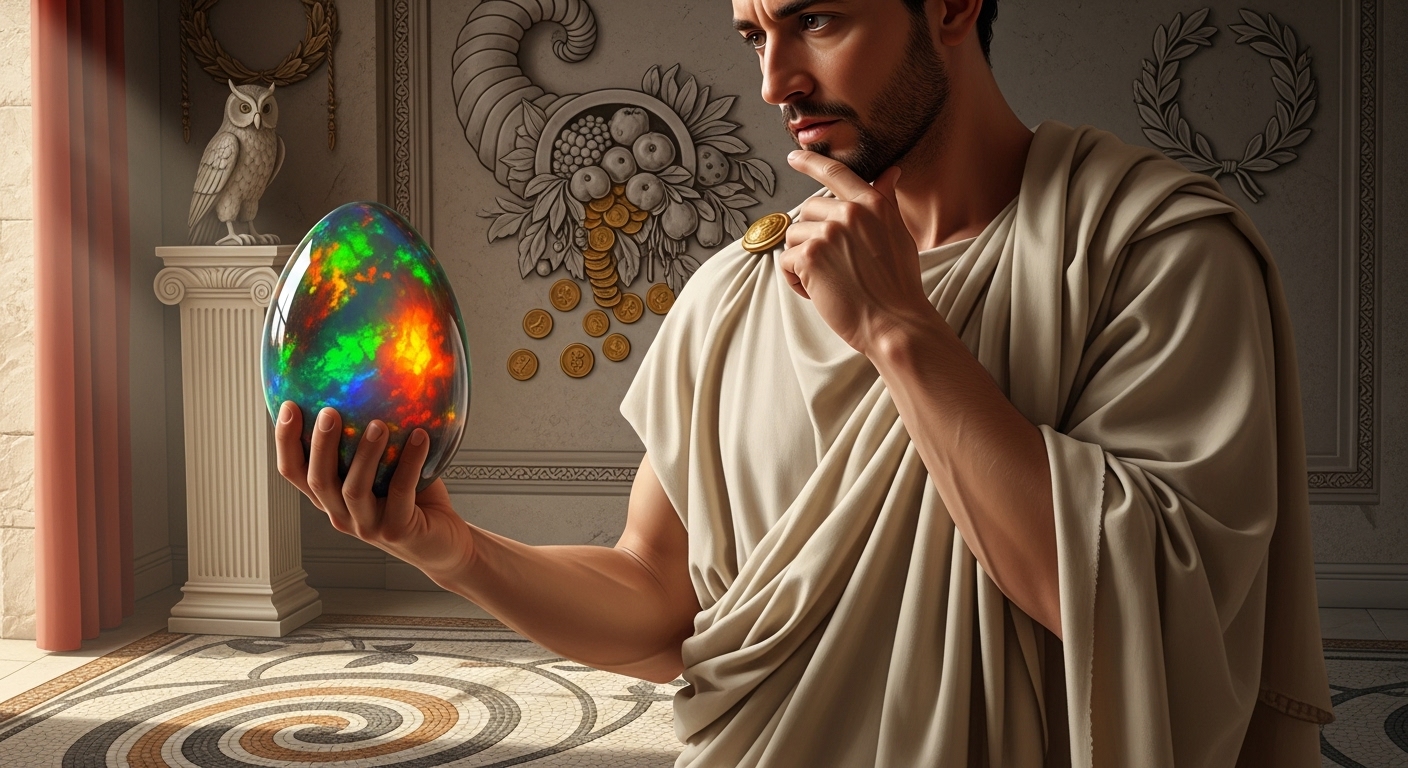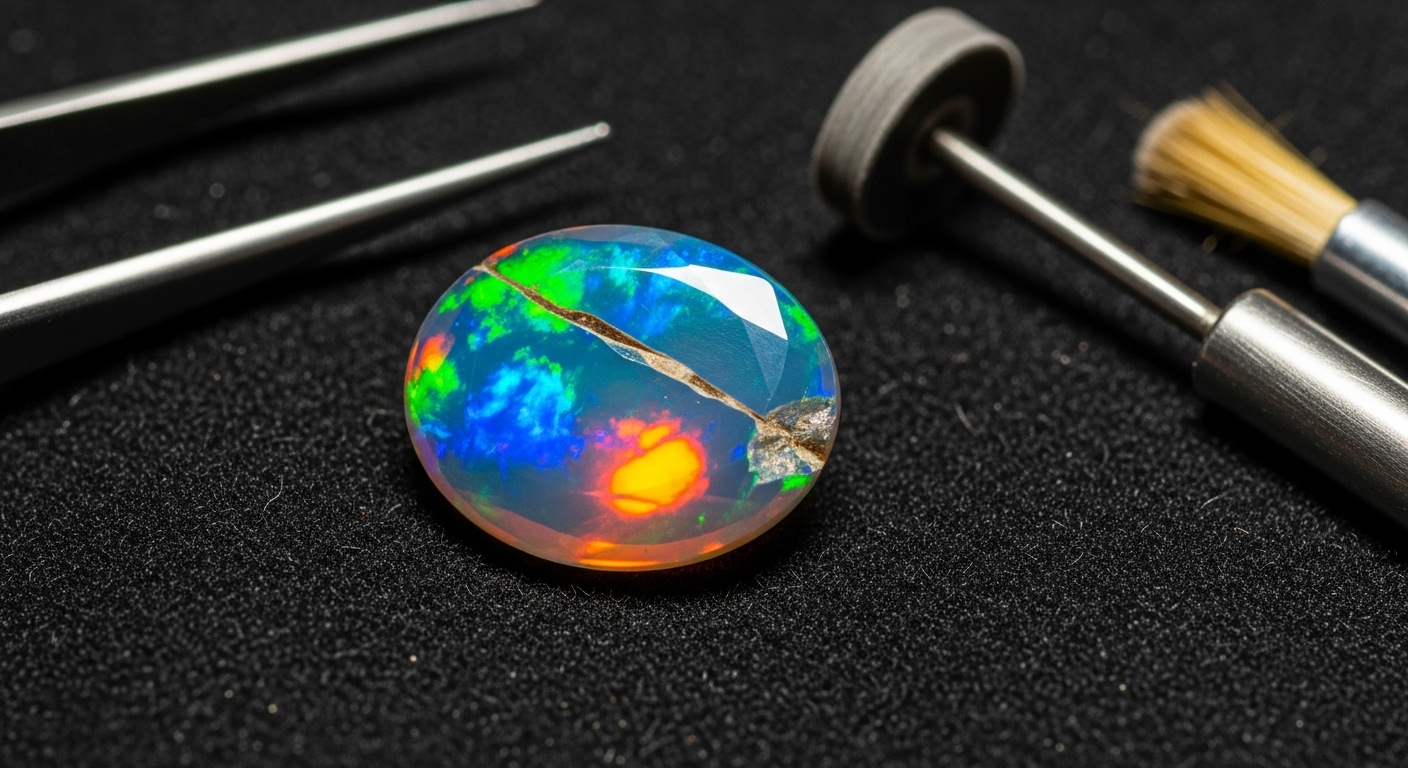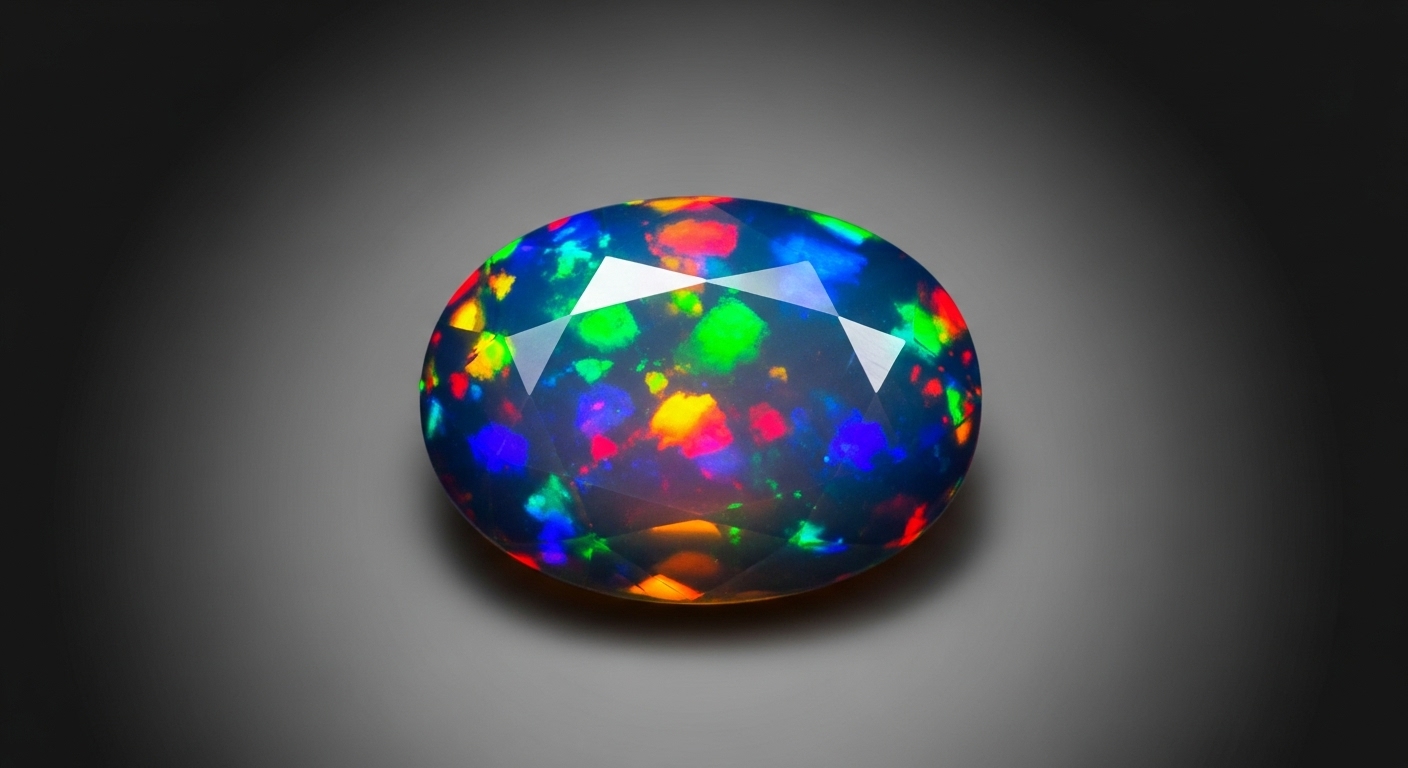Opals, with their mesmerizing ‘play-of-color,’ have captivated humanity for centuries. Yet, these beautiful gemstones are often shrouded in a peculiar reputation: that they bring bad luck. Is there any truth to this enduring superstition, or is it merely a tale spun through time? This article delves into the fascinating history and lore surrounding opals to uncover the origins of this widespread belief and present a balanced perspective on why are opals considered bad luck.
1. Introduction: The Enigmatic Opal and Its Conflicting Reputation
The captivating beauty of opals, with their unique ‘play-of-color,’ can stop you in your tracks. Their internal fire seems to hold a universe of colors, shifting and dancing with every movement. Yet, despite their undeniable allure, opals have long been whispered about as symbols of misfortune. This widespread superstition has puzzled gem enthusiasts and casual observers alike. This post will explore the historical origins and various factors contributing to the ‘bad luck’ myth surrounding opals, alongside their rich history of positive associations, to determine if these stunning stones truly warrant their ominous reputation.
2. A History of Good Fortune: Opals as Symbols of Hope and Power (Pre-19th Century)
Before the shadows of superstition fell upon them, opals were revered as treasures imbued with incredible powers, far from anything that would suggest why opals are considered bad luck. Their iridescent beauty spoke of divine origins and magical properties across many ancient cultures.
2.1. Ancient Civilizations: Reverence and Mystical Powers
- Ancient Greeks: These philosophers and mystics believed opals bestowed powers of foresight and prophecy, acting as a shield against disease. They saw the gem as a window to the future, a powerful amulet for health and wisdom¹.
- Ancient Romans: So highly were opals valued that they were prized second only to emeralds. Romans considered them potent symbols of hope, purity, and profound good fortune. Emperors would gift opals to their wives for luck and carry them as personal talismans. Often affectionately called the ‘Cupid Stone,’ they symbolized passionate love and desire².
- Aboriginal Culture: In the Dreamtime, indigenous Australians believed opals held deep spiritual properties, used in sacred ceremonies and rituals. They symbolized a powerful bridge between the earthly realm and the divine spirit world.
- Arabian Folklore: Legends tell of opals falling from the heavens in spectacular flashes of lightning, imbuing them with their vibrant, shifting colors, a gift from the sky itself².
2.2. The Middle Ages: A Protective Talisman
During the Middle Ages, opals continued their reign as a good luck talisman. It was commonly believed that opals combined the virtues and powers of all other gemstones, making them a singularly potent charm. They were associated with protecting eyesight, strengthening the mind, and improving memory. Interestingly, some believed opals could grant invisibility to the wearer, an attribute that, for a brief period, led to associations with thieves and spies by certain figures like Bishop Marbode of Rennes³.

3. The Genesis of Misfortune: How Opals Gained a Bad Reputation
So, how did a gemstone so revered transition into an emblem of misfortune? The answer lies not in any inherent property of the stone, but largely in the realm of fiction and historical misinterpretations, explaining why are opals considered bad luck in modern lore.
3.1. Sir Walter Scott’s ‘Anne of Geierstein’ (1829)
The single most cited source for the ‘bad luck’ myth surrounding opals is Sir Walter Scott’s immensely popular novel, ‘Anne of Geierstein’ published in 1829. The plot features the enigmatic Baroness Hermione of Arnheim, who wears a beautiful, enchanted opal. The opal dramatically loses its vibrant ‘play-of-color’ and becomes dull when touched by holy water, signaling her demise soon after. The novel’s widespread popularity had a profound and immediate impact, causing a dramatic drop in opal sales and cementing a negative association in the public’s perception of the stone.
3.2. Other Literary Contributions
- Charles Dickens’ ‘The Opal Ring’: Further solidified the negative perception of opals as harbingers of bad luck, echoing the themes of misfortune and mysterious occurrences. These fictional narratives greatly influenced public opinion, contributing to opal superstitions.
3.3. Historical Events and Misinterpretations
- The Black Death (Bubonic Plague): During the devastating plague in medieval Europe, a grim rumor spread: opals worn by plague victims would brilliantly glow until death, then mysteriously dull. This terrifying, though unfounded, observation tragically linked opals to disease and demise, fueling the nascent belief in opal bad luck.
- The ‘Evil Eye’ Association: In some parts of medieval Europe, the gemstone’s multifaceted shimmer and resemblance to the eyes of certain animals led to fears of the ‘Evil Eye.’ This ancient superstition suggested that opals could attract or inflict misfortune, further embedding negative beliefs.
- King Alfonso XII of Spain: A tragic story recounts a cursed opal ring given to King Alfonso XII. It was said to bring death to its wearers, including the King himself, who passed away shortly after receiving it. While this coincided with a cholera epidemic, the incident solidified the opal’s ill-fated reputation in folklore⁴.

3.4. Physical Properties and Misconceptions about Durability
Beyond folklore and fiction, some practical aspects also contributed to the negative reputation, making people question why are opals considered bad luck. Opals are indeed different from harder gems.
- Relative Softness: Opals are softer than many other popular gemstones, ranking 5.5-6.5 on the Mohs scale of hardness. This makes them more susceptible to scratches, chipping, or breakage if mishandled or worn without proper care⁵.
- Misunderstanding of Care: In an era before modern gemology, breakage during the cutting or polishing process, or damage from improper wear and harsh chemicals, may have been attributed to ‘bad luck’ or an inherent flaw in the stone, rather than the natural properties or the need for specific care. This fragility, when misunderstood, reinforced the notion of misfortune.
3.5. Alleged Diamond Industry Conspiracy
An intriguing theory suggests that the De Beers diamond cartel actively promoted the opal’s ‘bad luck’ myth. The alleged motive was to diminish the opal’s popularity and increase diamond sales, particularly for engagement rings, positioning diamonds as the only ‘safe’ and lucky choice for such significant occasions.

4. Debunking the Myth: Opals as Modern-Day Treasures
Despite centuries of misconception, opals have, thankfully, experienced a resurgence in popularity and appreciation. Modern understanding and endorsements have largely debunked the old superstitions, reminding us that there’s no real reason why opals are considered bad luck.
4.1. Royal Endorsements and Revival
One of the most significant figures in restoring the opal’s positive image was none other than Queen Victoria. Famously ignoring the lingering superstitions, she wore opals frequently and gifted them to her daughters. Her public endorsement, at a time when the British Empire influenced global trends, played a crucial role in rehabilitating the opal’s reputation and significantly boosting its popularity worldwide.
4.2. Contemporary Beliefs and Positive Associations
Today, opals are widely celebrated for their beauty and positive symbolism, reclaiming their rightful place among cherished gemstones.
- October Birthstone: Opals are the official birthstone for October, and it is widely believed that they bring good luck, happiness, and protection to those born in this month.
- Healing Properties: Many holistic and spiritual practitioners believe opals possess powerful healing properties. They are thought to aid emotional balance, amplify positive energies, and bring hope and good karma to the wearer.
- Symbol of Creativity and Light: Opals are often seen as a stone of positive transformation, bringing clarity, enhancing creativity, and helping individuals release negative patterns and embrace their true selves.
- Black Opals: Notably, black opals, celebrated for their dark body tone and vivid ‘play-of-color,’ are often considered particularly lucky and desirable.

4.3. Addressing Durability Concerns
With proper understanding and care, opals are durable enough to last a lifetime, dispelling outdated myths of inherent fragility. Modern jewelry techniques also offer better protection for opals. Tips for caring for opals include avoiding extreme temperatures, harsh chemicals, and sudden impacts. Storing them separately from harder gemstones can also prevent scratches. When cared for correctly, an opal’s beauty will endure for generations.
5. Conclusion: A Gemstone Reclaimed
The journey of the opal’s reputation, from a revered gem of ancient kings to a maligned stone of misfortune and finally to its modern reclamation as a beloved treasure, is a testament to the power of stories and perception. The enduring belief in why are opals considered bad luck largely stems from literary fiction and historical misconceptions, rather than any inherent property of the stone itself. It’s time to shed these outdated superstitions and appreciate opals for their unparalleled, unique beauty and potent positive symbolism. The true luck of an opal lies in the joy, wonder, and vibrant beauty it brings to its wearer.

References
- ¹ Gemological Institute of America (GIA). ‘Opal History and Lore.’
- ² International Colored Gemstone Association (ICGA). ‘Opal: The World’s Most Colorful Gemstone.’
- ³ Kunz, George Frederick. ‘The Curious Lore of Precious Stones.’ J.B. Lippincott Company, 1913.
- ⁴ Smith, H.L. ‘Gemstone Superstitions and Their Origins.’ Journal of Historical Gemology, 1987.
- ⁵ American Gem Society (AGS). ‘Opal Care and Cleaning.’
END



